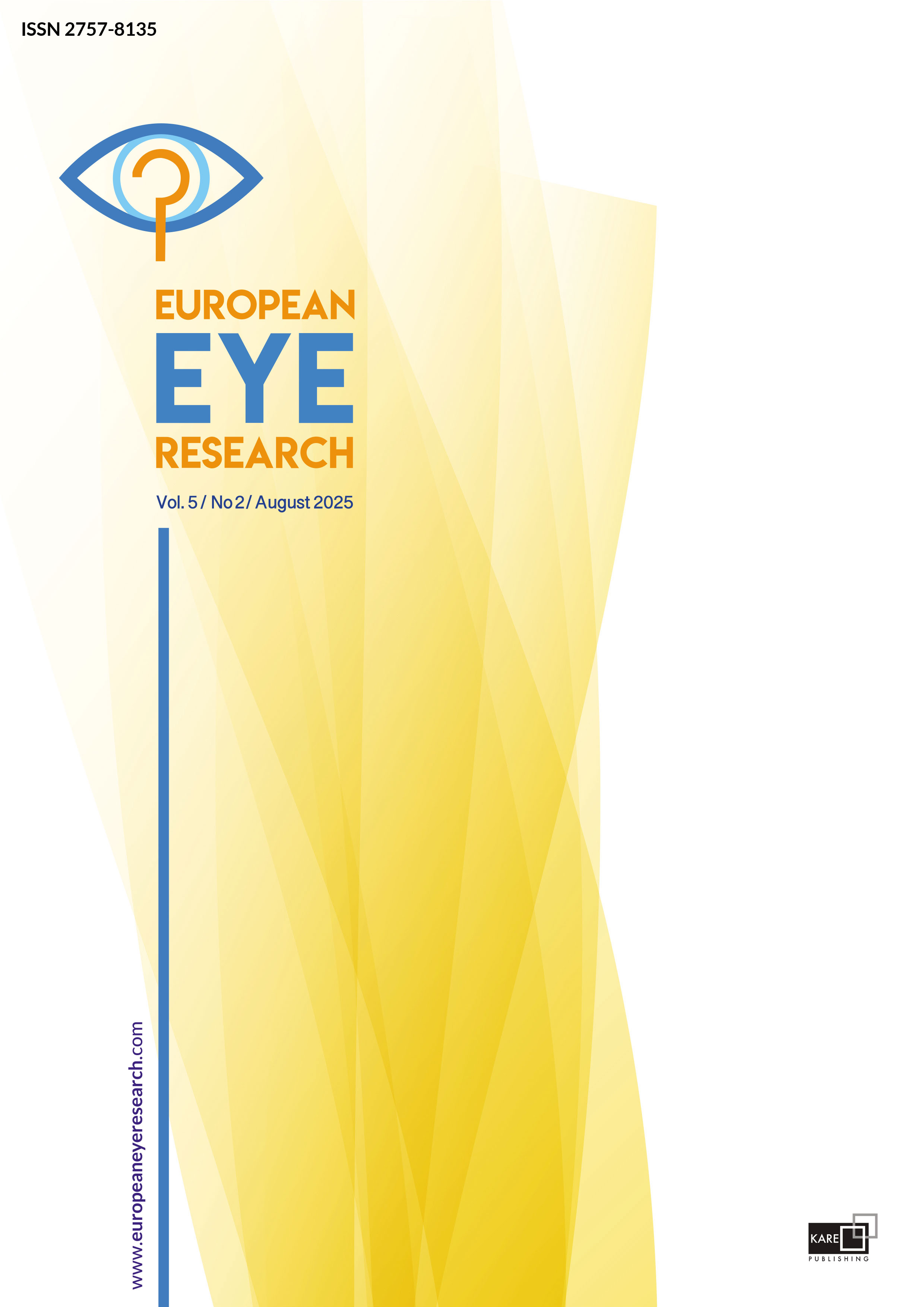

The quantification of retinal vein and artery trajectories using second-order polynomial equation in eyes with diabetic retinopathy
Abdullah Agin1, Mine Ozturk1, Dogan Menges2, Feyza Onder11Department of Ophthalmology, University of Health Sciences, Haseki Training and Research Hospital, Istanbul, Türkiye2Department of Ophthalmology, Iğdır State Hospital, Iğdır, Türkiye
PURPOSE: The objective of this study was to quantify retinal artery (RA) and vein trajectory alterations using a quadratic polynomial model, which may reveal associations with diabetic retinopathy (DR) severity and glycated hemoglobin (HbA1c) levels.
METHODS: This study aimed to quantify the RA and vein trajectory in DR using the quadratic polynomial equation. The ideal curves of the right (OD) and left (OS) eyes for the RA and retinal vein (RV) trajectories were determined. The transformed coordinates were applied to a quadratic polynomial (ax2/100 + bx + c) equation. The coefficient ‘a’ denotes the curvature of the vascular path; larger values indicate a steeper, narrower curve, whereas smaller values indicate a broader, flatter curve, which may be associated with retinal retraction or tractional changes.
RESULTS: The analysis involved 320 eyes of 167 patients, 74 males and 93 females, with a mean age of 58.1 years (34–76 years). Background, preproliferative, and proliferative DR (BDR, PPDR, PDR) were assessed. HbA1C levels were higher in PDR than in BDR (p<0.05). Retinal artery trajectory (RAT) in OD “a” values were higher in control than BDR, PPDR, and PDR. (p<0.05) RV trajectory in OD values was lower in PDR (p=0.031). Positive correlations existed between HbA1C levels and “a” value of RAT in OS and the mean value of RAT for both eyes in PDR (r=0.737, p=0.002; r=0.669, p=0.006).
CONCLUSION: These alterations in RAT, particularly in PDR, may reflect underlying tractional forces and could potentially serve as non-invasive markers of disease severity. However, further research is needed to fully understand their clinical implications and relationship with the HbA1C level.
Manuscript Language: English



